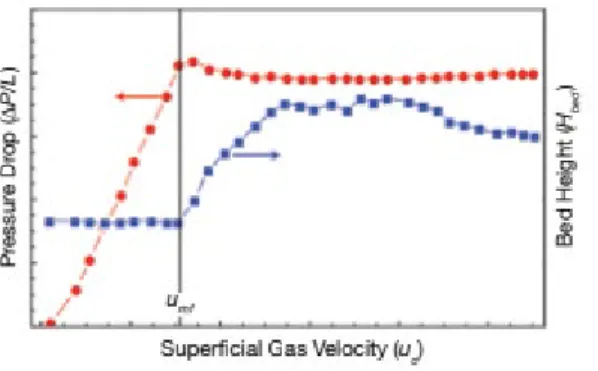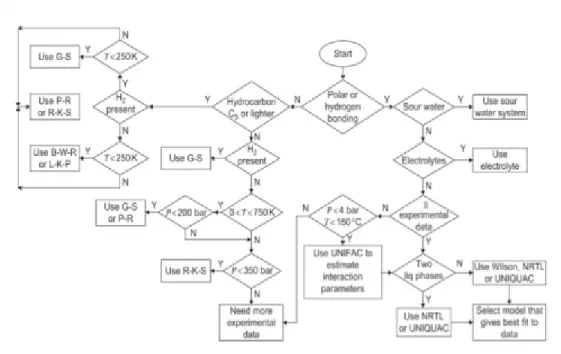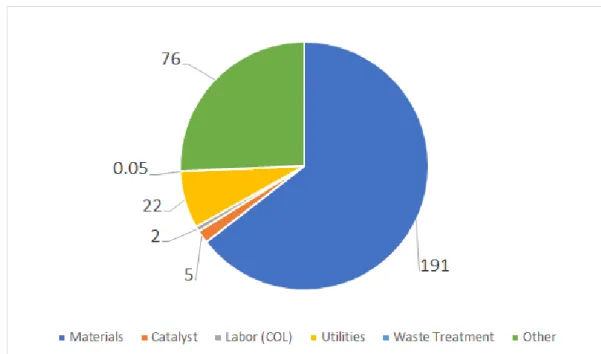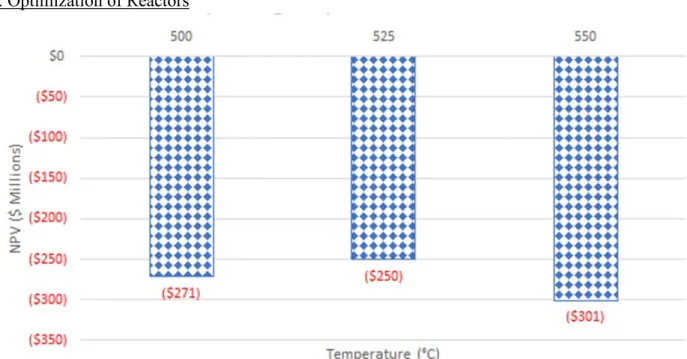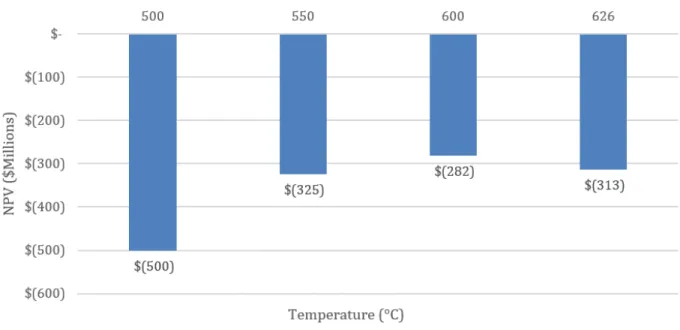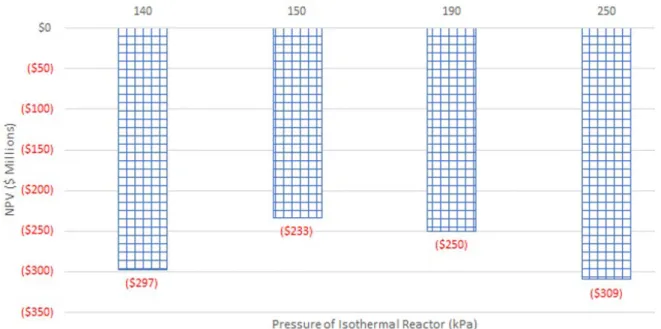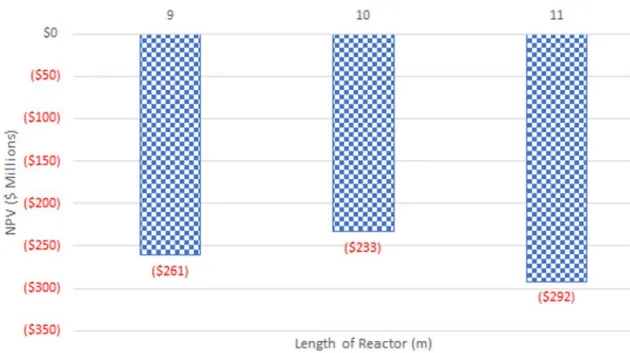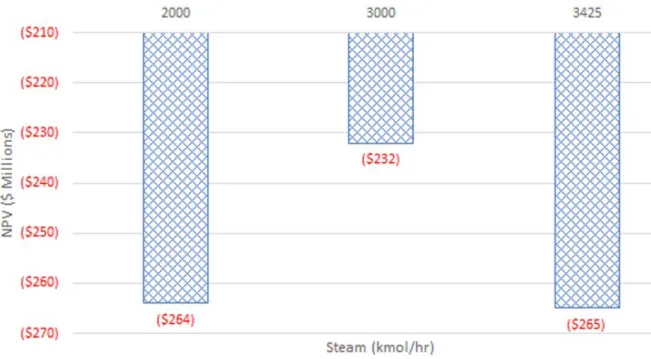Due to the differences in feed between the isothermal and adiabatic case, a fluidized bed reactor was simulated using both feeds. After selecting the components and the best thermodynamic package, the unit operations of the process must be added. The parameters that can be used to specify currents depend on the phase of the feed currents.
Due to the nature of the fluidized bed reactor, a certain amount of feed gas bypasses the catalyst. After obtaining the density of each component, a weighted average is found for each reactor interval. For the base case fluidized bed reactor, a fluidization rate multiplier of 6.5 was chosen because it is the average of the range of multipliers.
The optimization of these parameters of the isothermal and adiabatic reactor affected the YOC and the capital investment cost. The capital investment cost of the fluidized bed reactor was given based on the available heat transfer area. The comparison of the EAOCs between the reactors is shown in the graphs in Appendix M.
One reason why the fluidized bed reactor has the smallest cost is because of the small number of reactors.
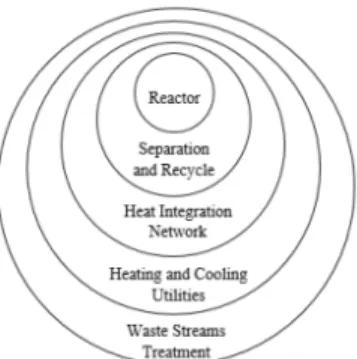
Executive Summary
Base Case Stream Tables
Optimized PFD
Optimized Stream Tables
Optimized Process Description
Optimization of Reactors
Optimization of Separation
Compressor System
Income and Cash Flow Statement of Optimized Process
Equipment Specifications
Utility Summary Tables
Smithbusters completed an economic analysis of the base case and discretely optimized the most expensive machines in Microsoft Excel to determine the optimized process. Due to the complexity of the base case, there were many different decision variables that affected the NPV of the case study. Certain elements of the base case needed to be optimized or studied in more detail due to their specific concerns.
These special concerns include the high temperature and non-stoichiometric feed of the reactors, the low pressure in the V-502 and V-503, he large. The non-stoichiometric feed of the reactor is justified because the large inflow of steam increases selectivity. Data of the temperatures and the NHW can be found for both reactors in Appendix G.
Smithbusters decided to move forward using isothermal reactors based on optimizing temperatures. After optimizing the reactors, the team decided to investigate the distillation towers, T-501 and T-502, for further optimization. After the material of construction optimizations, the team evaluated the distillation temperature of T-501 and 40℃ was selected, resulting in an NPV of $1 million.
Smithbusters also changed the temperature of the vessel from 65℃ to 55℃, increasing the NPV by $38 million. Lowering the vessel temperature allowed more of the components to condense, so less of the desired products, ethylbenzene and styrene, was lost to the fuel gas stream. More ethylbenzene was recycled because more ethylbenzene condensed due to the lower temperature in the 3-phase separator.
In the base case, the compressor required 540 kW and the motor required 770 kW, which increased utility costs and the price of the compressor. Since some of the chemicals in the process are toxic, a plant must consider the effect these chemicals will have on the environment. Although the construction material for some of the devices changed during the optimization process, the team did not consider all devices.
The condensed stream from the buds of T-501 contains all the benzene from the feed and also 99% of the toluene. This stream is then removed from the process and sold at half the individual prices of benzene and toluene. The purpose of the tower is to separate the ethylbenzene and styrene (the two main components remaining in the stream).
In the base case, the ratio of inlet pressure to outlet pressure for C-501 was higher than 5 (anything higher than 3 should be investigated).
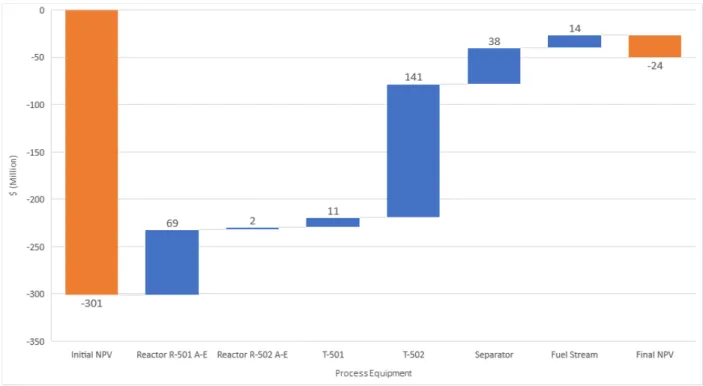
EAOCs of Reactors
Economic and Other Important Data/Information
After completing the base case economic analysis, The Smithbusters optimized the process by comparing several decision variables and determining which choice not only maximized net present value (NPV), but also produced the desired product and operated under safe process conditions. The high temperatures of the reactors are justified because at lower temperatures the reaction rates are too small to guarantee good conversion or to guarantee the smallest possible reactor. The large log-average temperature differences of the heat exchangers are justified because their respective utilities are needed to perform the required heating or cooling.
Variables considered in reactor optimization were reactor type, inlet temperature, inlet pressure, steam flow to the mixing point, and reactor volume. The team looked at the total NPV associated with the optimal temperature of each type of reactor to determine the best reactor. By lowering the temperature in the reactors, the selectivity increased, while the amount of feedstock fed into the reactor decreased.
The team reduced the amount of steam to 3,000 kmol per hour, which reduced the cost of supplies and the size of machines from the base case and allowed for a. The NPV increased by $4 million when the team changed the pressure on the T-501 from 40 kPa to 55 kPa. The team had to carefully optimize the pressure on the T-501, as reaching the styrene polymerization temperature of 125℃ could pose a potential risk.
The addition of the second compressor allows for a lower pressure ratio between the inlets and outlets of both compressors, while achieving the desired outlet pressure of 240 kPa at a temperature of 80℃. In the event of an accidental release of chemicals, the facility should notify the appropriate emergency personnel with information on what to do to ensure the safety of the people living near the facility. In the short time given, the optimizations resulted in significant improvements in the project's net present value, showing potential for
To determine if the optimization is feasible, the cost of the tower required to perform the desired separation must be less than the profit from selling the purified components. Although the one case of heat integration studied during the optimization process was unsuccessful, there are several opportunities to save money through heat integration throughout the rest of the process by lowering costs for utilities. This steam is used to provide some of the energy needed to drive the ongoing reaction and acts as a diluent.
The aqueous phase of water is pumped through the P-501 A/B, going from 58 kPa to 200 kPa, and removed from the process as wastewater. The bottom of T-502 contains 99.9% styrene from the feed, and the top contains 99.9% ethylbenzene from the feed stream.
